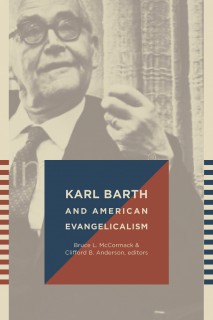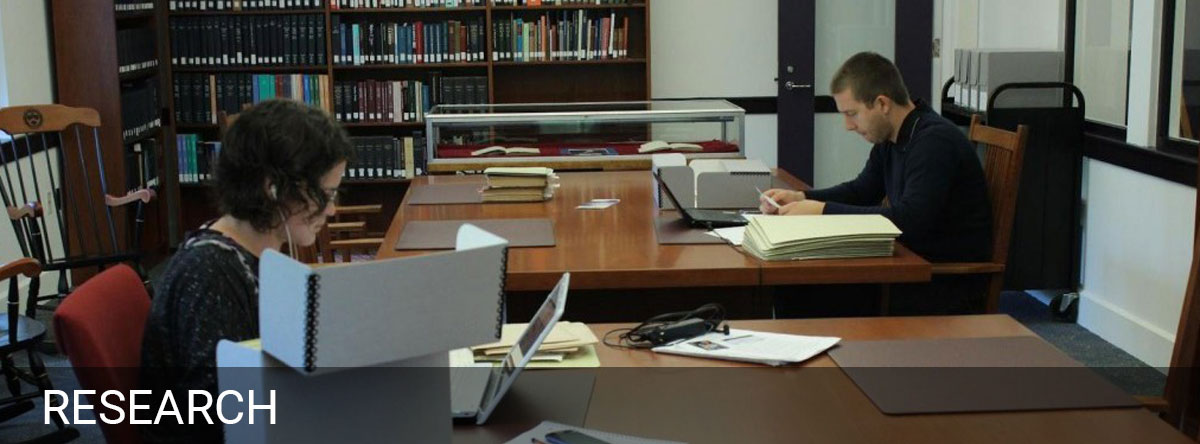 McCormack, Bruce L. and Clifford B. Anderson, eds. Karl Barth and American Evangelicalism (Grand Rapids, MI: Eerdmans, 2011), 400 pp. $38.00 (paperback).
McCormack, Bruce L. and Clifford B. Anderson, eds. Karl Barth and American Evangelicalism (Grand Rapids, MI: Eerdmans, 2011), 400 pp. $38.00 (paperback).
Reviewed by SueJeanne Koh (December 07, 2016)
Karl Barth and American Evangelicalism is a collection of essays that arose from the second annual Barth Conference at Princeton Theological Seminary, which took place in June 2007. Alongside other recently edited volumes, Karl Barth and Evangelical Theology (ed. Sung Wook Chung, 2008) and Engaging With Barth: Contemporary Evangelical Critiques (eds. David Gibson and Daniel Strange, 2009), this volume reflects the ambivalent but ongoing relationship between evangelicalism broadly construed and the impact of Karl Barth’s theological writings.This particular volume focuses in on American evangelicalism through the particular antagonistic relationship between Cornelius Van Til and Karl Barth. What this accomplishes is the ability to hone in on theological issues of concern that have particularly persisted for those who claim Van Til as part of their intellectual heritage. This heritage arose from the “modernist-fundamentalist” split, most clearly characterized in the establishment of Westminster Theological Seminary in 1929 by J. Gresham Machen. Though the disagreement between Van Til and Barth was years later and in one sense may be narrowly interpreted as a scholastic argument between neo-Calvinists and Barthians, in another it had broader implications for the contours of American evangelicalism as it sought to define its place in the social and cultural landscape of the twentieth century. Van Til may not be a name that comes to mind immediately when thinking about the prominent figures of twentieth-century American evangelicalism, but his consistent and ongoing criticism of Barth’s theology—even if not completely on target, as essays by George Harinck and Bruce McCormack indicate—and influence at Westminster have allowed for implicit familiarity with his thinking in Reformed circles. This is both the strength and the weakness of the volume. It allows, for the most part, a sustained thematic coherence throughout but at the expense of other doctrinal themes that are important to American evangelicals, such as the relationship between justification and sanctification, limited atonement, and baptism and communion.
The first two essays by George Harinck and D.G. Hart helpfully illuminate the historical genealogy and context of Van Til’s work. Harinck carefully provides the evidence that Van Til’s approach to Barth was influenced by his interactions with both Dutch neo-Calvinism and the theology of “Old Princeton.” Van Til took the concerns about Barth’s theology from the Dutch neo-Calvinists and translated these into a polemical defense of “Old Princeton” theology against Barth’s “unorthodox” theology. The result over the years has been a continued mutual but unnecessary suspicion between Barthians and neo-Calvinists, for while Van Til did anticipate some later evangelical concerns about Barth’s theology there were also areas of convergence. Hart points to this more balanced reception of Barth’s work through his historical narrative and genealogy of neo-Evangelicals, broadly associated with the pan-denominational organizations of Fuller Theological Seminary and Christianity Today.
Essays by John Hare and Clifford Anderson take up one of Van Til’s main criticisms of Barth, specifically Barth’s reliance on Kantian philosophical categories, which Van Til believes renders Barth’s theology “unfaithful to the gospel” (90). Hare’s essay is elegant and provocative in now he argues that not only is Van Til’s interpretation of Kant incorrect, but so is Barth’s interpretation, and so the two actually find themselves on the same side of the issue. Hare argues that more current scholarship and research on Kant show that there is nothing in Kant’s epistemology itself that is inconsistent with the gospel and that in fact Kant provides room for the workings of God’s grace. The import of Barth’s appropriation of Kant for evangelical theology is revealed at the end of Anderson’s contribution. Barth’s adaptation of the Marburg neo-Kantian “transcendental turn” speculatively allows for the possibility of a place for religious experience, which risks becoming an avenue for natural theology yet is so important for the evangelical narrative of conversion.
Significant concerns about Barth’s theology often arise from his actualized Christology, with the contention that it results in an abstract conception of the church and universalism. Michael Horton’s essay is particularly illuminating insofar as he delineates the differences between Barth’s Christology and Reformed theology of covenant and election. Although Horton ultimately argues that Barth’s Christology acts as a hermeneutic that obscures the soteriological dynamism of Reformed theology and the witness of scripture, Horton also recognizes the genetic similarities of the two and the possibility of further generative conversation. Adam Neder’s essay on Barth’s innovation regarding the hypostatic union takes up this possibility and provides a nice contrast to Horton’s piece. Neder argues that Barth, while finding resources for his Christology within the Reformed and Lutheran traditions, was above all invested in unfurling what he found in scripture for the sake of doing “evangelical” theology.
Next, Kimlyn Bender and Keith L. Johnson address the theme of ecclesiology, but from two different angles. Bender suggests that because American evangelicalism is marked more by doctrinal assumptions rather than confessional or denominational identity, the result has been “a kind of thin theological gruel owing more to the market and to cultural trends than to the developed theological heritage of the churches” (185). What Bender argues is that while Barth may have had some sharp words for evangelicalism today, he would have appreciated its catholic and ecumenical emphasis. Ultimately, Barth’s conceptualization of the church as “both [the] invisible and visible” body of Christ allows for a richer ontological ground for evangelical identity. Johnson takes up the concern expressed among some evangelicals that Barth’s ecclesiology does not allow for significant ontological expression of human action. He argues that Barth’s conception of the concursus Dei allows for the distinct but vital relationship between God’s action and ours, a necessary outworking of Barth’s doctrine of election. While I am unsure of Johnson’s discussion of the concursus Dei mapping so neatly onto Barth’s account of water baptism, this connection is one that evangelicals might find instructive in terms of strengthening ecclesial identity.
Bruce McCormack and Suzanne McDonald focus on the persistent charge of “universalism” in Barth’s theology, a worry that McCormack analyzes as one that funds all other evangelical concerns about Barth. McCormack’s essay takes up the Pauline witness to the question of eschatology and “hell” and reads it alongside both Barth’s early engagement with Paul in The Epistle to the Romans and his later doctrine of election. McCormack argues that Barth ultimately withdraws from a final affirmation of apokatastasis because of his commitment to upholding the diversity of scriptural voices. McDonald takes a fresh approach to the question of apokatastasis by asking what it means to be “in Christ,” thus bringing into sharper focus the Trinitarian shape of election. Through an examination of John Owen’s pneumatological understanding of election, McDonald reframes the Reformed evangelical concern about Barth’s bent toward “universalism” as one about the relationship between Christology and pneumatology.
The final set of essays in this volume takes up contemporary themes that intersect with American evangelicalism more broadly: the challenge of historical criticism via Carl Henry and Hans Frei (Springs), the emerging church (Franke), and Radical Orthodoxy (Hector). In the final essay, Todd V. Cioffi examines Stanley Hauerwas’s sharp church-state distinction and his use of Barth in support. Cioffi distinguishes Barth’s understanding of the church-state relationship from Hauerwas’s, and argues that Barth’s theology allows for active Christian participation in political and social affairs as affirmation of Christ’s lordship. From one perspective, the inclusion of this last set of essays seems only relevant to the subset of American evangelicals who have an interest in Radical Orthodoxy or who are explicitly familiar with the emerging church. So readers should remind themselves of the particular lens through which this volume is most fruitfully read: the doctrinal differences between Cornelius Van Til and Karl Barth, and the ways in which Radical Orthodoxy or the emerging church draws upon those differences. Finally, Bruce McCormack’s afterword provides a succinct but clarifying analysis of the problems of Van Til’s critique of Barth (e.g., his analysis only extends up to CD II/1) and the remaining fundamental contrasts between the two. While this conclusion might be read as a dismissal of Van Til in the end, McCormack submits instead that it is not “self-evident” about which path to choose. In saying this, he suggests that an ongoing and active searching of the scriptures as the living Word of God and tradition is what marks evangelicalism, more so than an allegiance to a particular figure or commitment to particular issues.
Given the ways in which American evangelicalism has found itself allied with strange bedfellows in the past year and how it has become overwhelmingly identified with certain social and political concerns (e.g., the status of same-sex marriage, the pro-life movement), reading this volume was initially a bit of an exercise in cognitive dissonance. It is also true that the racial and ethnic makeup of American evangelicalism is transforming evangelicalism from the inside out, and so some consideration or acknowledgement of this would have also been appreciated. However, this volume will be helpful to the careful and sympathetic reader who is familiar with Reformed evangelicalism and is interested in clearing the ground of some of the misconceptions regarding Barth and the doctrinal commitments of evangelical theology. Nuanced attention to doctrinal issues cannot fully solve the problems and issues of life together, but perhaps revisiting doctrine along the lines of what we see in this volume may force us to better articulate the connections to its outworking.
SueJeanne Koh, Th.D. Candidate, Duke Divinity School
The views expressed here are strictly those of the author; they do not necessarily represent the views of the Center for Barth Studies or Princeton Theological Seminary.


